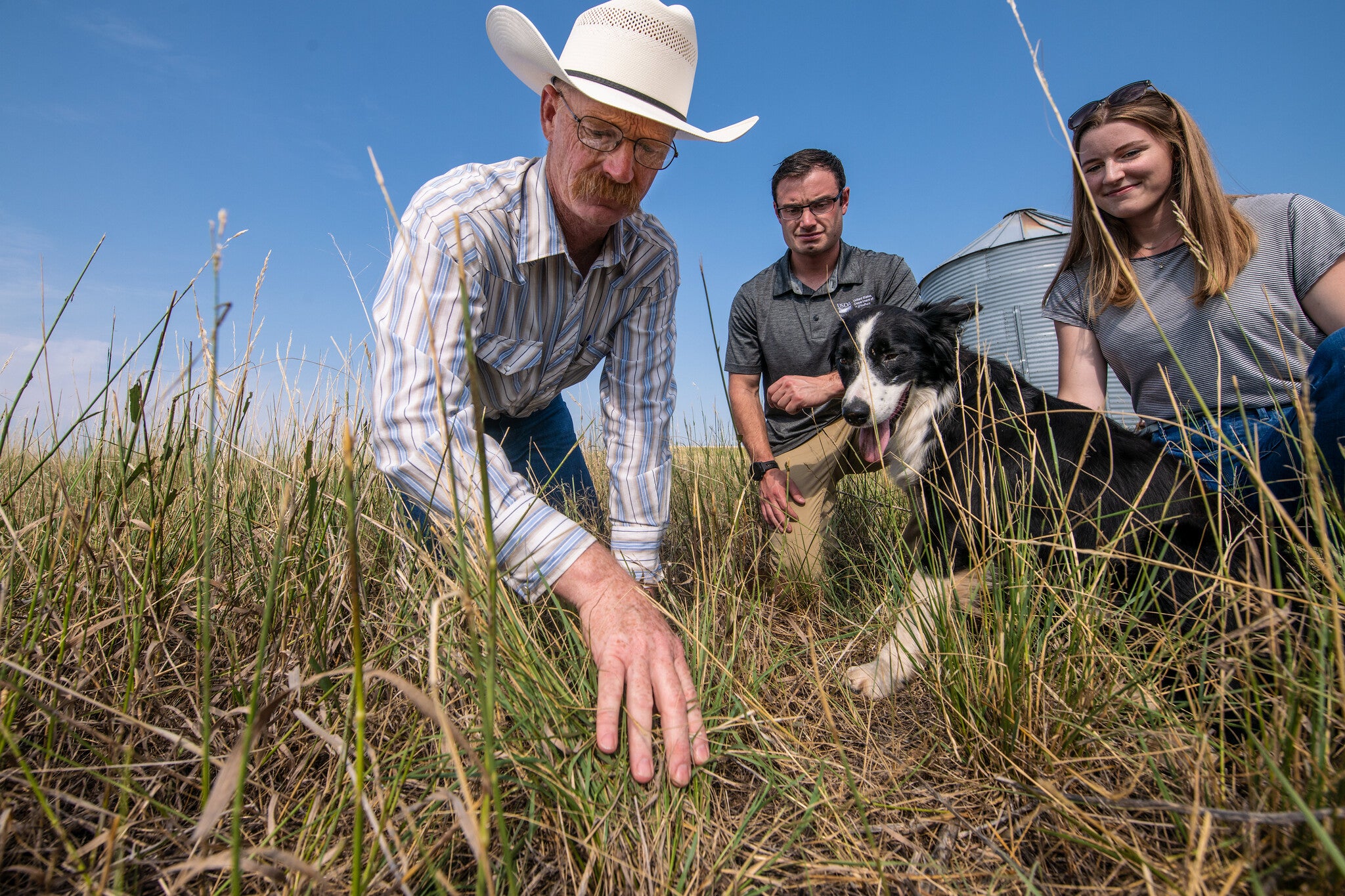
Federal R&D funds are key to solving enteric methane challenge, keeping U.S. agriculture competitive
As the U.S. works to stabilize the climate and foster innovative domestic industries, reducing emissions from agriculture — currently about 10% of annual emissions — is a critical piece of the puzzle. Yet federal R&D investments in agricultural climate solutions remain 35 times smaller than clean energy R&D investments.
Of the limited agricultural R&D spending, funds aren’t going to one of the biggest climate opportunities. Enteric methane emissions, released as livestock digest their food, account for 28% of U.S. agricultural emissions, but only 2% of federal R&D mitigation funds go toward enteric methane solutions, according to new research from The Breakthrough Institute and Environmental Defense Fund.
This mismatch will increasingly put U.S. farmers and ranchers at a competitive disadvantage in global markets and misses a top climate opportunity. Congress and USDA can remedy the mismatch in the next farm bill.
Why agricultural methane matters
Because methane is a more powerful pollutant than carbon dioxide in the near term, it is causing a significant amount of the warming that is already here. These climate impacts are making it harder for farmers to farm, causing heat stress for animals and lowering productivity. Reducing methane can stabilize the climate quickly with benefits for farmers, ranchers and the world as soon as this decade.
By deploying existing manure management solutions and scaling up new enteric methane solutions, the U.S. can cut agricultural methane emissions 25% by 2030. Achieving this goal will require innovative finance and policy solutions, as well as ramped up R&D for new enteric methane solutions, which will need to deliver more than half of the methane reductions possible by 2030.
Getting farmer-friendly enteric methane solutions to market
Some enteric methane solutions already exist. Improving the health and nutrition of cattle leads to greater productivity and lower methane intensity, or the amount of methane per unit of dairy or meat. In certain settings, products that disrupt enteric methane generation can also be added to livestock feed, but only a very limited number of these products exist.
To fully solve the enteric methane challenge as quickly as possible, we need the enteric methane innovation pipeline to be more robust and move more quickly.
Increasing research funding can help create a toolbox of solutions that can be tailored to a wide variety of livestock farms, whether animals are primarily raised on pasture or in barns. Investments should be based on standardized, science-based approaches for measuring enteric methane emissions that consider both animal and human health.
R&D to bring forth innovation and product commercialization is also essential. For example, investments in enteric methane monitoring, verification and reporting (MRV) capacity will be critical to evaluate programs and products eligible for USDA funding and build needed confidence in products that can generate carbon credits. These MRV tools should protect producer data, while also helping improve emissions models based on farm-specific herd and management practices.
Expediting methane innovation in the next farm bill
The incoming Congress will begin writing a new farm bill. This is one of the biggest opportunities to meet the unprecedented need for investments in enteric methane emissions solutions. The farm bill can equip USDA with R&D funding and increase support for farmers and ranchers who want to adopt methane solutions.
To jumpstart the development process, USDA should work with experts nationwide to form a task force or scientific advisory board to advise the department on conservation technical assistance and policy decisions related to enteric methane.
It’s time for policymakers to invest in solutions that position farmers and ranchers for changing global markets and that keep the U.S. on track to meet its commitment to cut greenhouse gas emissions in half by 2030.











